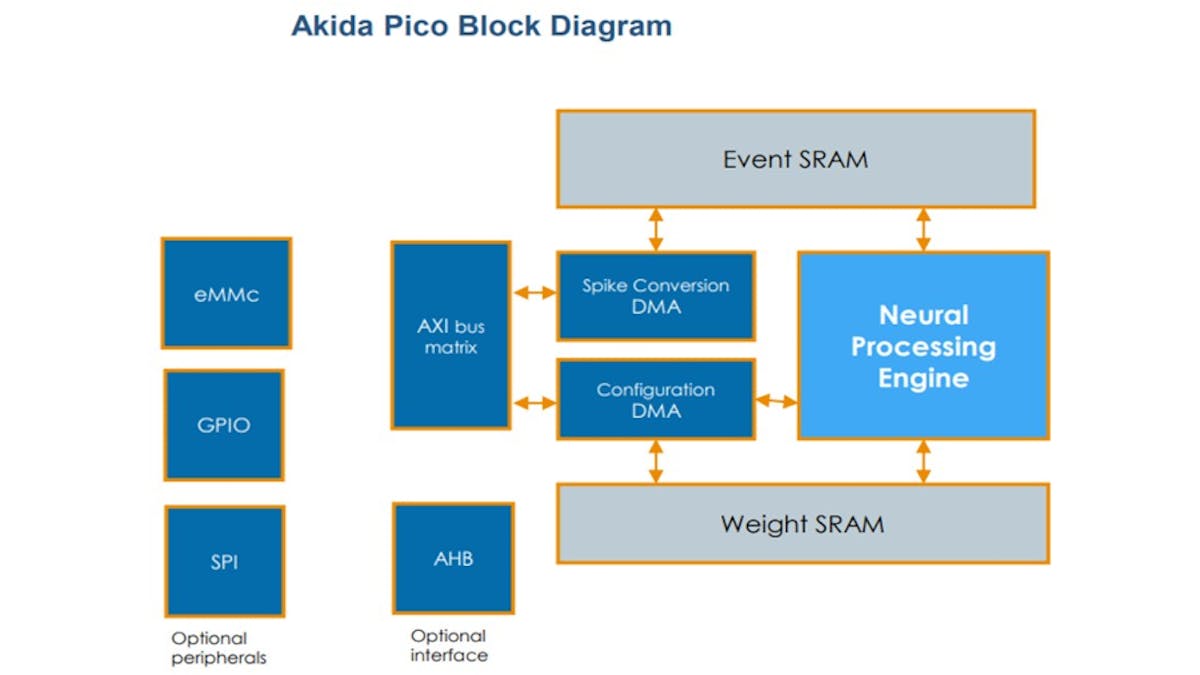BrainChip Shrinks the Akida, Targets Sub-Milliwatt Edge AI with the Neuromorphic Akida Pico
Second-generation Akida2 neuromorphic computing platform is now available in a battery-friendly form, targeting wearables and always-on AI.

Edge artificial intelligence (edge AI) specialist BrainChip has announced a new entry in its Akida range of brain-inspired neuromorphic processors, the Akida Pico — claiming that it's the "lowest power acceleration coprocessor" yet developed, with eyes on the wearable and sensor-integrated markets.
"Like all of our Edge AI enablement platforms, Akida Pico was developed to further push the limits of AI on-chip compute with low latency and low power required of neural applications," claims BrainChip chief executive officer Sean Hehir of the company's latest unveiling. "Whether you have limited AI expertise or are an expert at developing AI models and applications, Akida Pico and the Akida Development Platform provides users with the ability to create, train and test the most power and memory efficient temporal-event based neural networks quicker and more reliably."

The Akida Pico is, as the name suggests, based on BrainChip's Akida platform — specifically, the second-generation Akida2. Like its predecessors, it uses neuromorphic processing technology inspired by the human brain to handle selected machine learning and artificial intelligence workloads with a high efficiency — but unlike its predecessors, the Akida Pico has been built to deliver the lowest possible power draw while still offering enough compute performance to be useful.
According to BrainChip, the Akida Pico draws under 1mW under load and uses power island design to offer a "minimal" standby power draw. Chips built around the core are also expected to be extremely small physically, ideal for wearables, thanks to a compact die area and customizable overall footprint through configurable data buffer and model parameter memory specifications. The part, its creators explain, is ideal for always-on AI in battery-powered or high-efficiency systems, where it can be used to wake a more powerful microcontroller or application processor when certain conditions are met.
On the software side, the Akida Pico is supported by BrainChip's in-house MetaTF software flow — allowing the compilation and optimization of Temporal-Enabled Neural Networks (TENNs) for execution on the device. MetaTF also supports importation of existing models developed in TensorFlow, Keras, and PyTorch — meaning, BrainChip says, there's no need to learn a whole new framework to use the Akida Pico.
BrainChip has not yet announced plans to release Akida Pico in hardware, instead concentrating on making it available as Intellectual Property (IP) for others to integrate into their own chip designs; pricing had not been publicly disclosed at the time of writing. More information is available on the BrainChip website.
Freelance journalist, technical author, hacker, tinkerer, erstwhile sysadmin. For hire: freelance@halfacree.co.uk.


